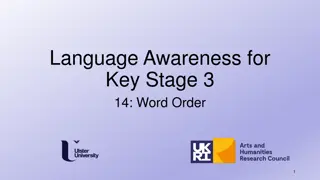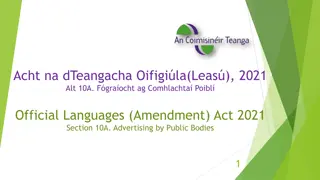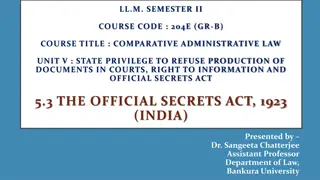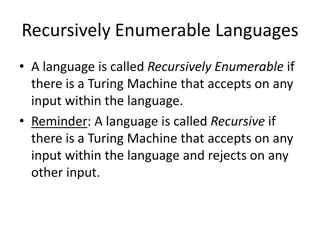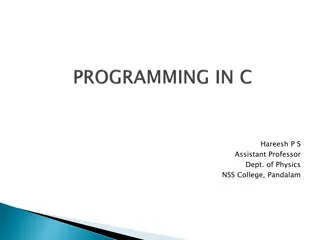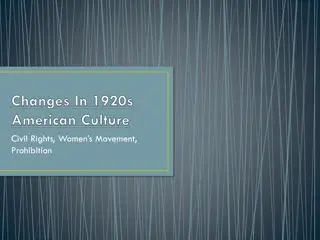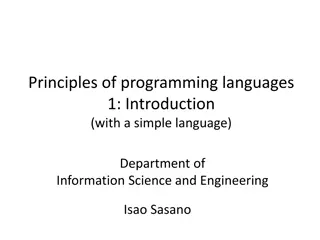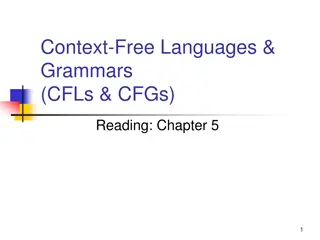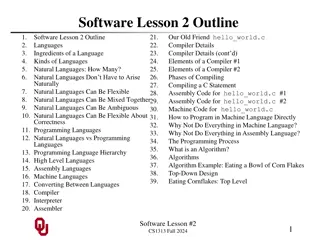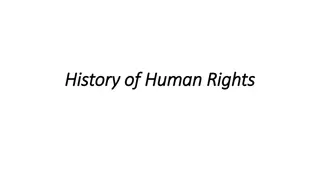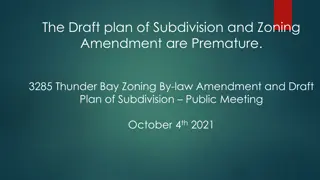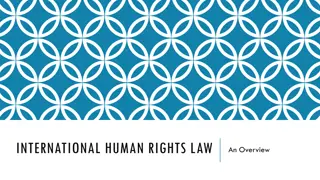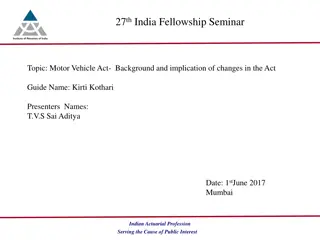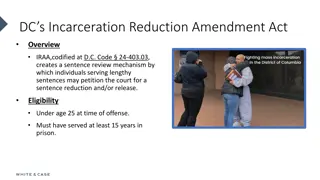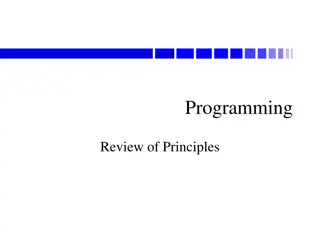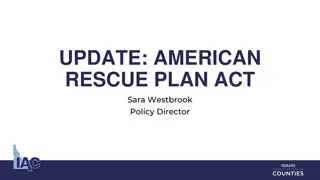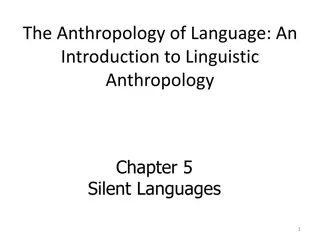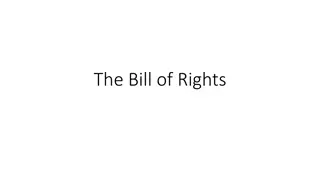Strengthening Language Rights: Official Languages (Amendment) Act 2021
The Official Languages (Amendment) Act 2021, enacted to strengthen the language rights of Irish speakers, introduces provisions for public bodies' communications in official languages. Section 10A requires public bodies to allocate a minimum of 20% of advertising in Irish and 5% of ad expenditure in Irish language media. This statutory obligation enhances the role of the Irish language in public communications, with Irish language media defined as those having at least 50% content in Irish. Effective from October 10, 2022, this legislation aims to bolster language diversity and inclusivity in public messaging.
Download Presentation

Please find below an Image/Link to download the presentation.
The content on the website is provided AS IS for your information and personal use only. It may not be sold, licensed, or shared on other websites without obtaining consent from the author. Download presentation by click this link. If you encounter any issues during the download, it is possible that the publisher has removed the file from their server.
E N D
Presentation Transcript
Acht na dTeangacha Oifigila(Leas), 2021 Alt 10A. F gra ocht ag Comhlachta Poibl Official Languages (Amendment) Act 2021 Section 10A. Advertising by Public Bodies Amended on 15th November 2023 2
Introduction & Context The Official Languages (Amendment) Act, 2021, enacted in December 2021, strengthens the Official Languages Act 2003. It contains a series of new provisions aimed at strengthening the language rights of Irish speakers. Amongst the provisions of the Official Languages (Amendment) Act 2021, there is a new statutory obligation for public bodies in relation to advertising, general communications and commercial communications which engage with the public. 3
Introduction & Context Section 10A. (Advertising by Public Bodies) of the Act places duties on public bodies in relation to the way they communicate in the State s official languages. The advertising sector is a very important communication medium, and accordingly this new provision is expected to be of considerable importance. The provisions in section 10A. which are defined as follows came into effect on 10th October 2022. 4
Official Languages (Amendment) Act 2021. Section 10A. Advertising by Public Bodies (1) A public body shall ensure that (a)at least 20 per cent of any advertising placed by the body in any year shall be in the Irish language, and (b) at least 5 per cent of any monies spent on advertising by the body in any year shall be in the Irish language through Irish language media. 5
(2) In this section advertising means (a)any form of commercial communication with the aim or direct or indirect effect of promoting a product or service of the public body concerned, and (b) any form of communication, to the public, in respect of (i) the recruitment of staff, (ii) legislative or policy initiatives, (iii) the purchase or sale of land or assets, (iv) the provision of services, or (v) public consultation; 6
Irish Language Media Irish language media means any media where 50 per cent or more of the content of that media is through the Irish language. 7
Advertising (Section 10A.) - definitions For the purposes of implementing and monitoring section 10A., the following definitions apply: Paid Advertising is any advertising that one pays for. It is always placed with a third party such as a TV channel, radio station, newspaper etc. Owned Advertising is advertising placed by public bodies on their own websites and social media channels etc. Both Paid and Owned advertising are subject to this new provision. 8
Advertising cont. Public bodies must ensure: At least 20 per cent of all yearly advertising shall be in the Irish language. At least 5 per cent of yearly advertising spend shall be in the Irish language and published on Irish language media. Irish language media = 50% or more media content through Irish. 9
What falls under these provisions? Advertising by Public Bodies in the following contexts TV/VOD/Cinema Radio/Audio Press Outdoor Digital Display (VMS traffic signs are exempt) Digital Native Advertising / Advertorials Digital Paid Content An advertisement - as distinct from content - that runs on owned channels, e.g., a recruitment ad on own website, i.e., section 10A. 2(b)(i) 10
What doesnt fall under these provisions? Content as distinct from advertising: Digital Content that runs on own media only Press Releases Brochures Newsletters In-house magazines Blogs Paid Search Advertising Shares Posts and reposts (of content as opposed to advertisements) Reviews Influencers 11
Recommended Approach Each of the official languages should be given parity of esteem in all media, for instance, similar copy lengths for TV and radio, similar sizes for print and social. In the interest of the parity of esteem, it is not recommended to dub or subtitle (as distinct from graphics) on TV/VOD. Advertisements placed with Irish language media will be in Irish only. 12
Recommended Approach Continued Irish language media means any media in which 50 per cent or more of the content of those media is through the Irish language (excluding advertisements). The responsibility lies with the public bodies to ensure that 20% of their annual advertising placed by the body is done through the Irish language. The responsibility lies with public bodies to ensure that 5% of their annual general advertising budget is spent on Irish language advertising, on Irish language media. The total of all expenditure, rather than the expenditure of each media channel, may be used for the purposes of the audit. Cost of production will not be considered for the purpose of audit. 13
Measurement OCT has consulted extensively with many Government Departments as well as sectoral interests, including IAPI (Institute of Advertising Practitioners Ireland) and its media agency members. 20% of any advertising placed (10A. 1 (a)), means 20% of Owned and Paid advertising as defined above. For public bodies that place their advertising through third party media buying agencies, the standard industry measurement systems, e.g., ratings for TV, will apply. 14
Measurement cont. Using these guidelines, on slides 16 and 17 - the onus will be on the public body to show that it has complied with the 20% obligation. The 20% obligation does not necessarily have to be applied to each individual advertising campaign. It does have to be 20% in the round at the end of the reporting year. In order to reach the 20% target for campaigns, some bodies may give 1/5 random copy rotation instructions to media outlets i.e., instruction to ensure every 5th ad is the Irish language version. This rotation model will be accepted as an indication of compliance. 15
Measurement Metrics (1) Measurement Measurement Measurement of Measurement of 20% 20% Description Description Media Definition Detail Copy rotation 1 in 5 OR % of Total Circulation (Estimates where no ABC - Audit Bureau Circulation) Circulation refers to number of copies sold on an average day, week or month depending on the frequency of publication. Print/Magazine Advertising % of total average listenership (the number of people who listen to a given radio station). (89k weekly reach Kerry Radio) Copy rotation 1 in 5 OR % of Total Listenership Radio Advertising Copy rotation 1 in 5 OR % of Total Impressions Audio Advertising Digital Audio by % of Total Impressions. OOH - Out of Home/Outdoor Advertising % of Total Sites or 1/5 for digital OOH Total number of poster sites booked for the campaign 16
Measurement Metrics (3) 5% spend on Irish Language Media Media Channel Total Annual Spend Spend on Irish Language Media Total (100%) (5%) 18
Public Body Reporting Public bodies shall be asked to file an electronic compliance return in relation to this requirement no later than 10th March 2024 in respect of 2023 advertising and every year thereafter. Compliance will include a record of creative executions in the Irish language. The audit shall be based on data from 2023. If, however, a member of the public submits a complaint to An Coimisin ir Teanga regarding the implementation of this statutory obligation, OCT may undertake a compliance inquiry with that public body relating to any complaint made from the 10th October 2022. 19
Irish Language Media All media with at least 50% Irish language editorial content, exclusive of advertising A list will evolve over time and this one is not exhaustive Updates will be provided as they become available Platform Media Television Radio TG4 RT RnaG, Raidi na Life, Raidi R R Tuairisc.ie, N s.ie, Meoneile.ie, Molsc al, Bloc, Extra-G.ie, ireBheo.ie, OohGaeilge.com Comhar, An Timire, Feasta, Seachtain Online Press 20
FAQ 1. What is the aim of section 10A. (Advertising by Public Bodies)? Section 10A. (Advertising by Public Bodies) is a new provision in the Official Languages (Amendment) additional duties on public bodies in relation to communicating with the public in the State s official languages. Section 10A. sets out specific obligations with Act 2021, which places regard to advertising. 2. When did section 10A. (Advertising by Public Bodies) come into effect? All the provisions regarding advertising by public bodies as prescribed in section 10A. came into effect on 10th October 2022. All public bodies prescribed under the Act are obliged to comply with all the provisions of section 10A. from this date. 21
FAQ 3. What does the 5% requirement regarding advertising by public bodies through Irish language media mean? 5% of any monies spent advertising by the public body in any year shall be in the Irish language on Irish language media. The measurement will be based on 5% of the total annual advertising by the body, under the criteria defined on slide 10. 4. Can production costs be included as part of the annual advertising spend with regard to the 20% and 5% requirements? No, production costs will not be considered for measuring the 5% or 20% requirement. The definition in section 10A. refers to placed advertising and therefore production costs are excluded from the definition of the provision. 22
FAQ 5. How will compliance with the 20% and 5% requirements be measured by Oifig an Choimisin ara Teanga. Oifig an Choimisin ara Teanga, will provide public bodies with a reporting template that will capture key metrics to measure compliance by public bodies with the 5% and 20% requirements. The metrics concerned are detailed on slide nos. 16-18 of this presentation, they reflect metrics used by public bodies when buying advertising on various media. The reporting template will be made available to public bodies. 6. Does advertising spend need to be 20% + 5% or can you do 15% + 5%, e.g., 15% Irish advertisements in English language media and then 5% in the Irish language media? Yes, to the latter part of the question. The 20% requirement can include the 5% spend requirement on advertising in the Irish language through Irish language media. 23
FAQ 7. A corporate body includes a number of schools and centres, e.g., does each school submit its own data? A public body prescribed under the Act must provide evidence of compliance to the 20% & 5% requirements for the public body in its totality, as against at the sub-entity level, e.g., Education and Training Boards (ETB) responsible for reporting for all its member schools. 8. Non-Irish language media. If an advert in Irish is placed on a non- Irish language media platform, will it still count towards the Public Body s 20% target? Yes. 24
FAQ 9. Is there a list available of Irish Language Media? The following definition is prescribed for Irish language media in section 10A. (2) of the Official Languages (Amendment) Act 2021: Irish language media means any media where 50 per cent or more of the content of that media is through the Irish language. No further statutory guidelines have been issued on the definition above, as prescribed in the legislation. Under the Official Language Act 2003 (section 21 (e)), an Coimisin ir Teanga is prescribed to advise public bodies on their obligations under the legislation. To that end, Oifig an Choimisin ara Teanga has suggested a non-exhaustive list of Irish language media to assist public bodies in meeting their obligations. The current list, as presented on slide 20 of the attached Powerpoint slides, is subject to continual change. As this provision is implemented, other Irish language media may be added, including new, local, and regional ones. 25
FAQ 10. When will monitoring of section 10A. begin? Public bodies will be obliged to comply with all the provisions of section 10A. from 10th October 2022. In addition, Oifig an Choimisin ara Teanga (OCT) will require public bodies to file an electronic compliance return concerning Section 10A. no later 10 March 2024 regarding advertising for 2023 and every year thereafter. The return filed by public bodies will form the basis for OCT to measure compliance by public bodies regarding their advertising operations during 2023. than 11. What creative material are we required to retain for audit i.e TV cut downs, different press sizes etc.? For each campaign, you will need to retain one hero asset per medium i.e. master TV, radio, press and digital ad. You will be required to keep these assets for potential review until June 2024. 26
FAQ 12. What happens if a public body fails to comply with this provision? The following procedures in the primary legislation will be followed to monitor compliance and address any non-compliance by public bodies. investigation of a complaint made by a member of the public or/and monitoring of compliance by Oifig An Choimisin ara Teanga a statutory investigation can be initiated, if required findings/recommendations are made in the statutory investigation report if non-compliance persists, An Coimisin ir Teanga can lay a report detailing this situation of non-compliance by the public body before the Houses of the Oireachtas. 27
FAQ 13. Who decided on the 5% and 20% requirements in Section 10A.? The Houses of the Oireachtas decided that these provisions should be included in the Official Languages (Amendment) Act 2021. Accordingly, President Michael D Higgins signed the Official Languages (Amendment) Bill 2019 into law on 22 December 2021. 14.Can the 20% be a combination of Paid and Owned advertising? Yes, provided that the public body can show the data on the percentage (%) or impressions reached on their owned media. 28
FAQ 15. Is paid and owned media subject to the 20% requirement? Yes, both paid advertisements placed with a third party and advertisements placed on owned media, see slide 10. 16. Why isn t Direct Mail mentioned in your advisory notes? There is existing legislation (predating 10A) pertaining to Direct Mail Section 9(3) Official Languages Act, 2003) 17. Are advertising? boosted posts on social media considered paid Yes. You may have content that doesn t fall under the provision that you decide to boost by buying space on social media. Once you pay, it morphs from content to advertising i.e., the paid part falls under the provision. 29
FAQ 18. Does informational video content produced for or generated by public bodies and embedded on owned media (website or twitter platform) fall subject to section10A.? No, unless it includes an ad. However, promotional are subject to the provisions 10A(2)(a) videos 19. Can Irish language advertising be broadcast on English- medium media/platforms to satisfy the 20% requirement? Yes. 30
FAQ 20. Does the 20% requirement relate to overall organisation advertising or 20% of each advertisement? The 20% requirement relates to a public body s overall, in- the-round, advertising output in a particular year. Having a portion of a particular advertisement, e.g., 20% in Irish, and the remaining 80% in English, is not acceptable. Each of the official languages should be given parity, e.g., similar copy lengths for TV and radio, similar sizes for print and social media. Whether an advertisement is in English or Irish, the language used should be of a high standard. 31
FAQ 21. Will outdoor advertising campaigns run on behalf of public bodies come under the scope of Section 10A.? Yes. 22. Can Irish language advertisements be broadcast consecutively with English language advertisements on English-medium media/platforms to satisfy the 20% requirement. Yes. 23. Will public bodies be permitted under section 10A. to use local or regional media to meet the 20% requirement if it is the case that it doesn t use national TV or Radio for advertising? Yes. 32
FAQ 24. Will public procurement/OGP notices fall within the scope of section 10A? Yes, when the notice is placed as an advertisement. 25. Will public procurement on e-tenders be considered as advertising, specifically mini-competitions under frameworks not open to public view? No. 26. Do public notices (placed as an advertisement), e.g., planning notices, road traffic notices fall within the scope of section 10A? Yes. Planning notices and road traffic notices issued by a public body will fall within the scope of subsection 10A.2(b): any form of communication, to the public, in respect of (i) the recruitment of staff, (ii) legislative or policy initiatives, (iii) the purchase or sale of land or assets, (iv) the provision of services, or (v) public consultation; 33
FAQ 27. Does bilingual advertising meet an organisation's 20% obligation? Yes, but the following caveat is important. Two separate blocks of text, one in Irish and one in English, conveying the same information in a single advertisement is acceptable. However, having a portion of one advertisement, e.g., 20% in Irish, and the remaining 80% in English, or vice versa is not acceptable. Each official language should be given parity, e.g., similar copy lengths for TV and radio and sizes for print and social media. Whether an advertisement is in English or Irish, the language used should be of a high standard. 28. Can 50% of the spend of an advertisement such as this be counted towards the 20% requirement? No. As detailed above in FAQ no.27, where one portion of an advertisement is in Irish, and another portion of the same ad is in English is unacceptable and cannot be counted for the 20% requirement. 34
FAQ 29. Does a public service announcement fall under these provisions? Not if it s on owned media and conforms with the understanding of a public service announcement: A time-specific announcement creating awareness about an issue of concern to the general public. i.e. road closure, pitch closure, train breakdown, road traffic diversion. If the announcement also runs on paid media, then that portion of the activity falls under the provision. 30. Must a full magazine published by a public body have equal amounts of text in Irish and English? No, with regard to section 10A. However, any advertising in the magazine must comply with the 20% requirement. If a public body was distributing the magazine to the general public or a class of the general public, e.g., via mailshot, then it may be subject to section 9(3) of the current Act. 35
FAQ 31. Does the act cover marketing communications such as informational / promotional emails, advertorials, new service or product announcements? Refer to slides 10 & 11. 32. Are there any contexts in which ad spend internationally falls within the confines of section 10A.? Once a public body is prescribed under the Official Language Acts it must adhere to the provision. Section 10A. doesn t distinguish between national and international spend. 36
FAQ 33. What are the implications for longer or multi-annual contracts that public bodies have already in place with media buying agencies where it may prove impossible to meet the 20% or 5% requirements? It is required that public bodies comply with the new provisions in section 10A. and that all efforts in doing so are documented. As previously stated, An Coimisin ir Teanga does not have the functions or powers to offer a derogation to any public body from any statutory obligation in this legislation. 37
FAQ 34. If recruitment ads are placed in Irish, does this mean that public bodies need to facilitate the recruitment-application process in Irish, run case studies in Irish, and conduct the interviews in Irish? No, unless a public body has a commitment in its language scheme, which specifies that it will run its recruitment operations accordingly through the medium of Irish. Language schemes are confirmed by the Minister for Tourism, Culture, Arts, Gaeltacht, Sport and Media. Language schemes will be replaced by language standards as prescribed in sections 19A 19D of the Official Languages (Amendment) Act 2021. However, when implemented, language standards may place an obligation on public bodies, or categories of public bodies, to undertake some recruitment campaigns through the medium of Irish. 38
FAQ 35. Will supporting documentation relating to advertisements but that will not include part of the advertisement seen by the public need to be also translated too? No. However, some exceptions may arise, as pointed out in FAQ 34. For example, if a public body had committed to it in its language scheme, it would run some of its recruitment campaigns through the medium of Irish. In this case, candidates could have access to supporting documentation that would not appear in advertisements but would nevertheless come under the scope of the commitment in the language scheme confirmed by the Minister for the public body. Language standards (19A) under the new Act will replace language schemes. The current obligations under section 10 of the Official Languages Act 2003, which require public bodies simultaneously in the official languages, will continue. to publish certain documents 39
FAQ 36. If a public body sponsors an advertisement, e.g., a poster for a third party, does it come under the aegis of section 10A? Yes, a poster is considered an advertisement and, in this case, involves spend by a public body. 37. What is the distinction between an advertisement and content posts (specifically on social media)? For example, an event listing for an art gallery? Slide 10 covers what falls under advertising and slide 11 covers what falls under content (which is not considered advertising). 40
FAQ 38. What is digital content that runs on the public body s own media? For example, the content on a public body s website, newsletter, or social media platform that doesn t form part of an advertisement is not considered advertising. 39. From a social content perspective, where it is organically posted on owned channels and does not contain a paid CTA (button etc.) or spend behind it., but a written CTA (Call-to-action buttons) within the post or creative - will this be deemed acceptable (come under the 20% requirement)? The content on a public body s website, newsletter, or social media platform that doesn t form part of an advertisement is not considered advertising. As specified on slide no. 11, posts and reposts of content, as opposed to advertisements, don t fall within the scope of the provision. However, if the call to action button leads to an ad then it would fall under the scope of section 10A. 41
FAQ 40. Are videos exempt from the "any form of communication with the public 10A 2(b) requirement? It would depend on whether the videos in question are considered advertising as opposed to content, as described on slides 10 & 11. Also see FAQ no.18 41. Does section 10A. cover IVRs (Interactive Voice Recording) in Irish language? No, Interactive Voice Recordings are not deemed to be advertising communication. 42
FAQ 42. Is it 20% of the audience reached or 20% of the media spend for the purpose of measuring the obligation under section 10A.? The metrics for measuring compliance with the 20% requirement are set out on slides 16 & 18, according to the different media channels. 43. Will an additional budget be supplied to public bodies for the translation costs arising, as a result of section 10A.? No. This matter does not fall within the scope of this legislation. 43
FAQ 44. The geographic jurisdiction that our public body is responsible for, doesn t include a Gaeltacht region. Is our public body obliged to comply with the 5% and 20% targets? Yes, all public bodies are obliged to comply with the provisions prescribed in section 10A. 45. What happens if we use a soundtrack with English lyrics on our TV/Radio ads? If the lyrics are incidental rather than fundamental to the communication (the telling of the story) then it qualifies. If the lyrics are not fundamental to the story, it doesn t. As TV productions require a large investment OCT is happy to pre-approve any scripts where the client is unsure. 44
FAQ 46. Is brand communication on your owned company assets (company vans, buildings, uniforms) content or advertising? In the vast majority of instances, it is deemed to be content and viewed the same as content on your website. However, if in the normal course of business your organisation is in a position to sell that space to a third party it is deemed to be advertising bus and rail companies that sell advertising vehicles/trains. e.g., their space on 47. What is the function of An Coimisin ir Teanga with respect to advising public bodies on Section 10A. Section 21 (e) of the Official Languages Act 2003 prescribes it as a function of An Coimisin ir Teanga: to provide, as he or she considers appropriate, advice or other assistance to public bodies regarding their obligations under this Act. 45
FAQ 48. What are the functions of An Coimisin ir Teanga with respect to ensuring compliance by public bodies with Section 10A.? Section 21 (a), (b) & (c) of the Official Languages Act 2003 prescribes the following functions of An Coimisn ir Teanga: s.21 (a) - to monitor compliance by public bodies with the provisions of this Act s.21 (b) to take all necessary measures within his or her authority to ensure compliance by public bodies with the provisions of this Act 46
FAQ FAQ 48. cont. s.21 (c) - to carry out investigations, whether on his or her own initiative, on request by the Minister or pursuant to a complaint made to him or her by any person, into any failure by a public body to comply with the provisions of this Act that he or she or, as appropriate, the Minister, considers may have occurred. s.26 (5) prescribes: If, within a reasonable time after a report containing recommendations is submitted to a public body under subsection (2), any recommendations contained in the report have not, in the opinion of the Commissioner, been implemented by that body, the Commissioner may, after considering any responses made to him or her by the public body in respect of those recommendations, make a report thereon to each House of the Oireachtas. 47
FAQ 49. We do advertising for lots of "one off" events throughout the year, does every ad have to be reported as a separate advertising campaign? You can bundle "one off" ads under umbrella terms such as Miscellaneous ads 2023 or Event advertising 2023 . As long as the cumulative number of ads and related impressions/ratios are reported, you can use whichever campaign titles you feel work best. 50. For digital campaigns do I need reports showing engagement and reach? We are just interested in impressions" which are the number of times your advertising is displayed. While you may hold reports on engagement and reach they do not form part of your report to OCT. 48
An Spidal, Co na Gaillimhe. H91VK23 eolas@coimisineir.ie 49
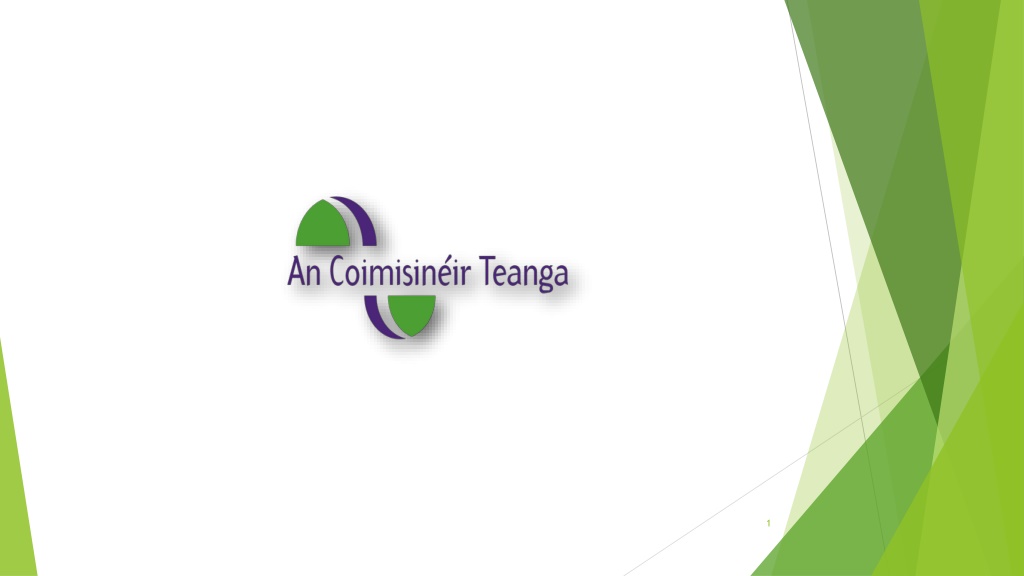


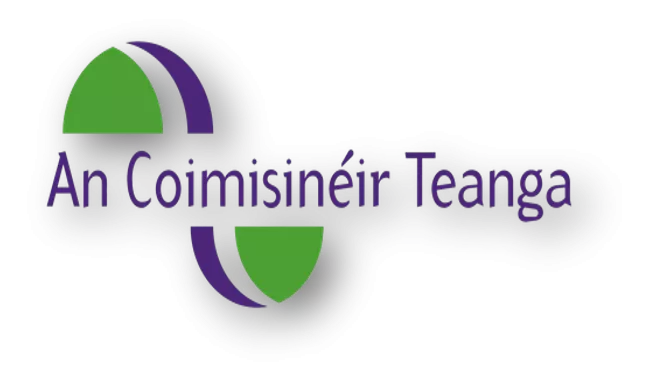
 undefined
undefined





